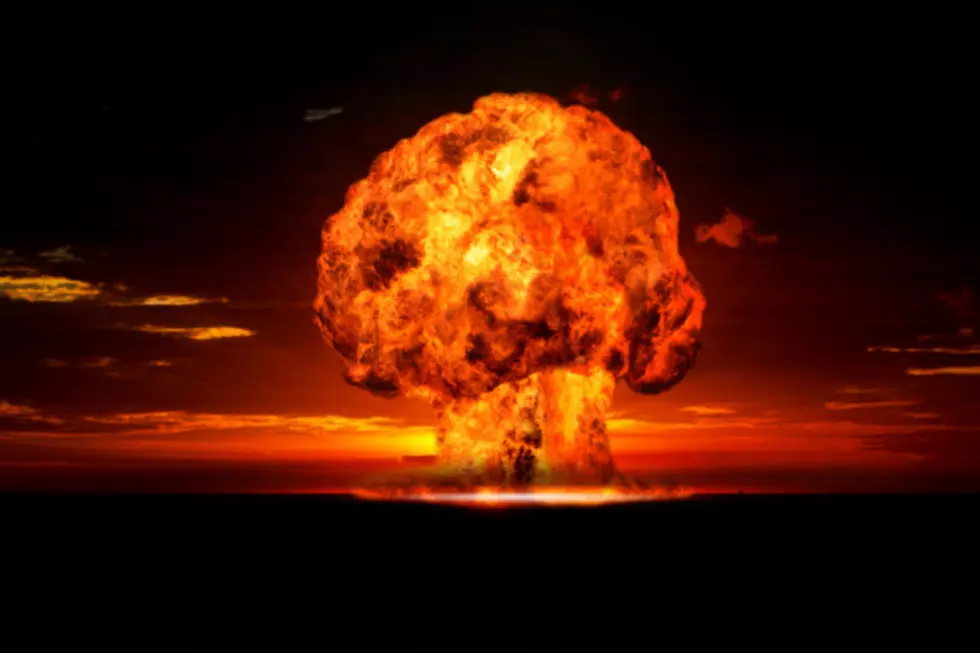
Government Guide to Surviving a Nuclear Blast
With tensions growing between North Korea and the rest of the world, specifically the United States, the worry of a nuclear attack is on the forefront of people's minds. How real is the possibility of a threat being acted upon? No one really knows, but one thing the government has done is provide Americans with a step-by-step guide to survival.
It's important to understand just how damaging a nuclear blast can be. According to the government website Ready.gov,
A nuclear blast is an explosion with intense light and heat, a damaging pressure wave, and widespread radioactive material that can contaminate the air, water, and ground surfaces for miles around. All nuclear devices cause deadly effects when exploded.
The first thing to do in preventing the impacts of a radiation attack is to be prepared. Ready.gov provides a list of steps you can take so you'll be ready in the event of an unexpected attack. The website recommends,
- Build an Emergency Supply Kit
- Make a Family Emergency Plan.
- Find out from officials if any public buildings in your community have been designated as fallout shelters.
- If your community has no designated fallout shelters, make a list of potential shelters near your home, workplace and school, such as basements, subways, tunnels, or the windowless center area of middle floors in a high-rise building.
- During periods of heightened threat increase your disaster supplies to be adequate for up to two weeks.
There are three factors that are important when it comes to surviving the initial attack and the aftermath. Those factors are distance, shielding and time. The more distance you can put between yourself and any contaminated particles will cut down on the exposure to radiation. When thinking about places to seek shelter the important thing to remember is the denser the better. Ready.gov says materials like thick walls, concrete, bricks, books and earth are the best materials for protection. Then of course, it's important to remember time. Though the intensity of radiation diminishes rapidly, the government recommends that you avoid any contact for at least two weeks. That is why having an Emergency Supply Kit is so important.
The website gives a number of precautions to take during a nuclear blast and if you are caught outside at the time of the attack. Here are just a few recommendations.
During The Blast
1. Listen for official information and follow the instructions provided by emergency response personnel.
2. Find the nearest building, preferably built of brick or concrete, and go inside to avoid any radioactive material outside.
3. During the time with the highest radiation levels it is safest to stay inside, sheltered away from the radioactive material outside.
4. When evacuating is in your best interest, you will be instructed to do so. All available methods of communication will be used to provide news and / or instructions.
What To Do If Caught Outdoors
1. Do not look at the flash or fireball - it can blind you.
2. Lie flat on the ground and cover your head. If the explosion is some distance away, it could take 30 seconds or more for the blast wave to hit.
3. Remove your clothing to keep radioactive material from spreading. Removing the outer layer of clothing can remove up to 90% of radioactive material.
4. When possible, take a shower with lots of soap and water to help remove radioactive contamination. Do not scrub or scratch the skin.
5. Gently blow your nose and wipe your eyelids and eyelashes with a clean wet cloth. Gently wipe your ears.
For a full list of steps and precautions to take before, during and after a nuclear attack on American soil, visit https://www.ready.gov/nuclear-blast. On this website you will also find access to a number of documents and contacts for organizations that would most likely aid those people and areas impacted by the blast.
More From WIBX 950









